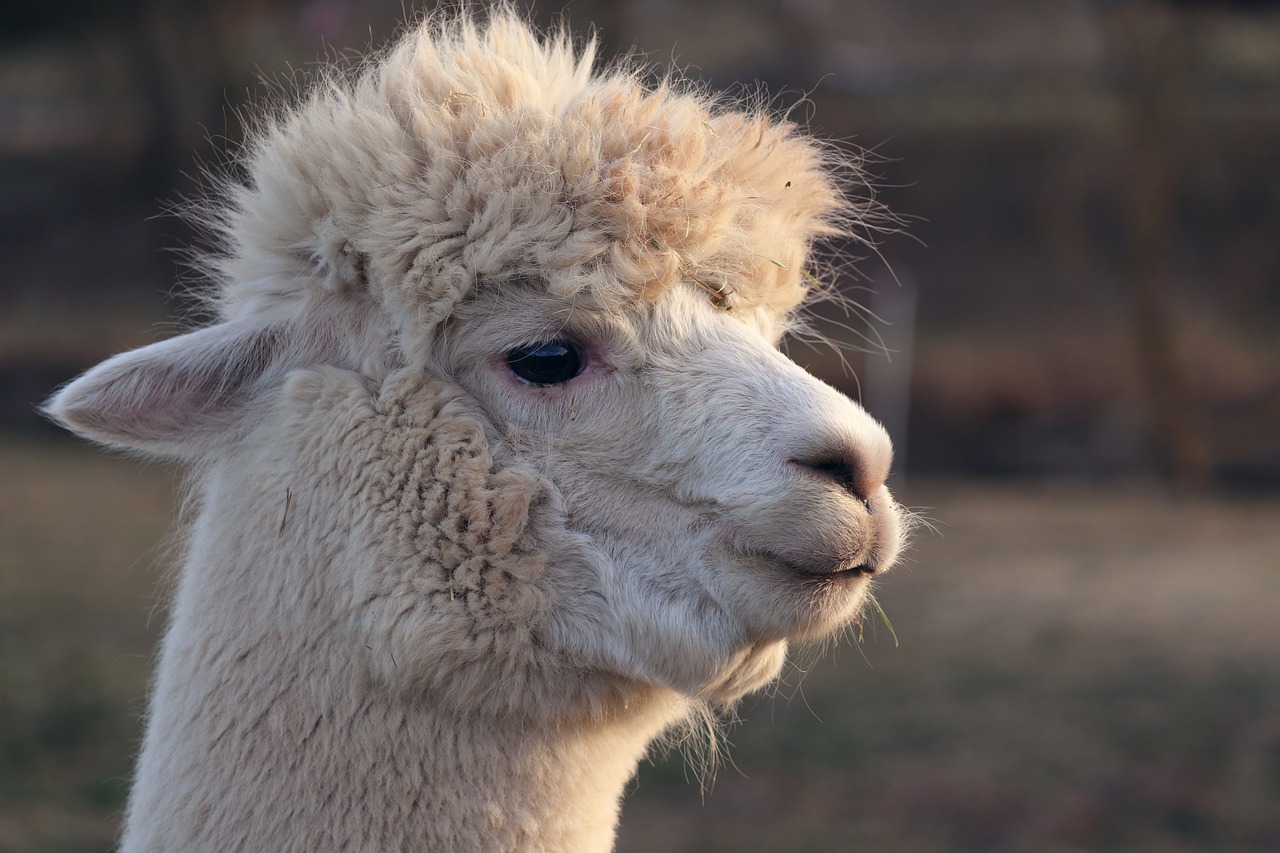- Alpacas are domesticated camelids native to South America.
- They are highly valued for their soft and luxurious fleece, which is used to make textiles and garments.
- Alpacas are closely related to llamas, but they have a smaller and more compact body size.
- There are two main types of alpacas: Huacaya, which have dense and fluffy fleece, and Suri, which have long, silky locks.
- Alpacas were first domesticated by the indigenous peoples of the Andean region thousands of years ago.
- Alpacas are known for their gentle and docile nature, making them popular as companion animals and therapy animals.
- They have a lifespan of around 15 to 20 years, although some can live longer with proper care.
- Alpacas are herbivores, primarily feeding on grasses and other vegetation.
- They have a unique digestive system that allows them to efficiently extract nutrients from their diet.
- Alpacas are ruminants and chew cud, a process that aids in the digestion of plant matter.
- Alpacas have padded feet with soft pads that leave minimal impact on the environment.
- They are adapted to high-altitude environments and can thrive in harsh and cold climates.
- Alpacas are social animals and live in herds, often forming close bonds with their group members.
- They communicate through a variety of vocalizations, body postures, and even spit to establish social hierarchy or express discomfort.
- Alpacas have excellent eyesight and can detect predators from a distance.
- They are known for their incredible fleece, which comes in a wide range of natural colors, including white, brown, black, and various shades of gray.
- Alpaca fiber is hypoallergenic, making it suitable for individuals with wool allergies.
- Alpacas are shorn once a year to harvest their fleece, which can be turned into luxurious garments, blankets, and other textile products.
- Alpaca fleece is highly prized for its softness, warmth, and durability.
- Alpacas have been bred selectively for their fleece quality, resulting in different grades and fiber characteristics.
- The demand for alpaca fleece has increased globally, leading to the establishment of alpaca farms in various countries.
- Alpacas are environmentally friendly grazers and can help maintain pasture health by selectively eating grasses and leaving weeds untouched.
- They have a gentle nature, making them relatively easy to handle and work with.
- Alpacas have been used as pack animals in their native South America, carrying supplies and goods across mountainous terrain.
- Alpacas have a soft, padded two-toed foot structure that minimizes damage to the ground.
- Alpaca fiber is naturally water-resistant and has excellent thermal properties, helping to keep the animals warm in cold and wet conditions.
- Alpacas are sensitive to extreme heat and are often provided with shade and access to cool water in hot climates.
- They have a unique hum, which is a gentle vocalization used for communication within the herd.
- Alpacas have been bred for specific traits, including fiber fineness, density, and uniformity.
- They are social creatures and often engage in communal dung piles, helping to concentrate waste in a specific area.
- Alpacas are generally healthy animals and are less prone to certain diseases and parasites compared to other livestock.
- They are naturally curious animals and may investigate new objects or visitors in their environment.
- Alpacas are known for their adaptability to different altitudes and can be found in regions ranging from sea level to over 4,000 meters (13,000 feet).
- Alpacas have a unique rolling behavior called “pronking,” where they spring into the air and kick their legs out.
- They have a thick double coat, with a soft insulating underlayer and a tougher outer layer.
- Alpacas have been used in animal-assisted therapy programs, providing comfort and companionship to individuals in need.
- They have been bred for specific purposes, including fiber production, show competition, and even as guard animals for smaller livestock like chickens.
- Alpaca fiber is naturally flame-resistant, providing an added safety benefit in certain applications.
- Alpacas have three-chambered stomachs, similar to other ruminant animals, which aids in the digestion of fibrous plant material.
- They are territorial animals and may engage in vocal and physical displays to defend their territory from intruders.
- Alpacas have a gentle demeanor, but they can spit as a form of defense or to establish dominance within the herd.
- They are efficient converters of grass into energy, requiring less food compared to larger livestock animals like cows or horses.
- Alpacas have a natural aversion to soiling their fleece, often using designated areas within their pastures for dung piles.
- They have soft, expressive eyes and long eyelashes that give them a charming and endearing appearance.
- Alpacas have a gestation period of around 11.5 months, typically giving birth to a single cria (baby alpaca) per pregnancy.
- Alpacas have been exported to various countries worldwide, including North America, Europe, and Asia, where they continue to be bred and raised.
- They have padded lips and a split upper lip that allows them to graze efficiently on grasses and other vegetation.
- Alpacas have been used for their guard instincts, as their alert nature and protective instincts can help deter predators from attacking other livestock.
- Alpacas have a natural hierarchy within their herds, with dominant individuals asserting their authority through body language and vocalizations.
- They have been celebrated for their contribution to sustainable agriculture, as alpaca farming is often considered environmentally friendly and low-impact.
Facebook Comments


































